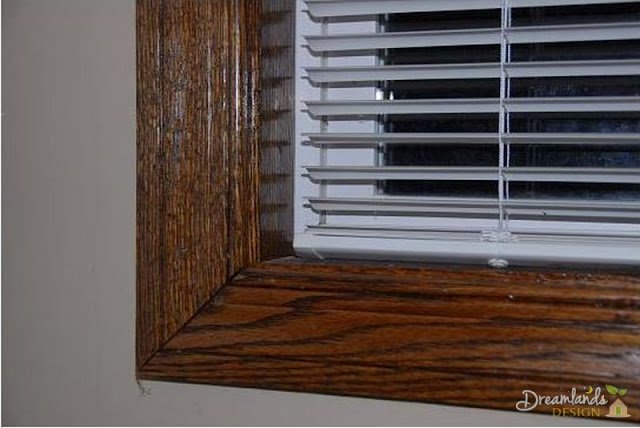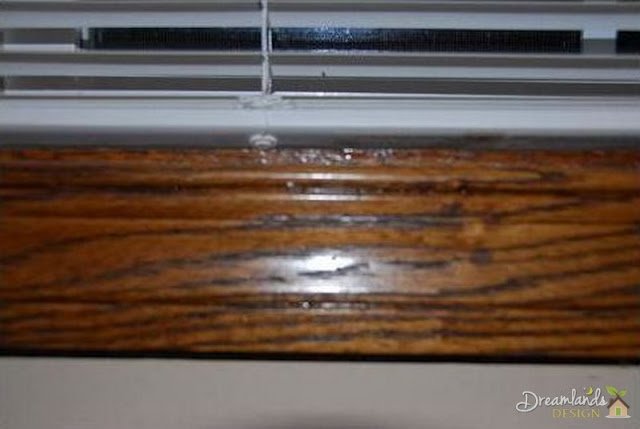Table of Contents Show
If you want to stain your wooden window frames, to give them that dark wood look, let this guide show you how. I cover everything from preparation to the actual staining and finishing process and throw in some staining tips as well.

Introduction to Staining Wooden Window Frames
Your window frames support your window and act as a visual transition between your walls and the outside world. When you first install them, they may look light and cheap, but that’s nothing a good coat of stain can’t fix.
Staining window frames let you give them a darker look while still being able to see the grain of the wood.
Staining is a little different than painting, since you aren’t just covering up the wood, so it requires a few additional steps to get your frames looking good, but these tips on staining windows will help you complete the task.
Read Also:
- Window Maintenance 101: How to Keep Your Windows in Good Condition
- Creative Ways to Enlarge the Look of Small Finished Basement Windows
- Smart Windows & Other Innovative Window Systems for The Home
- DIY Plantation Shutters Window Treatments for Your Home
- Best Window Treatments to Change the Look of Your Rooms
- DIY Repainting: How to Paint Your Old Wood Furniture
- How to Stain and Brighten Your Wooden Fence
Gathering the Materials
Before you can start on your project, you need to pick out the right stain. If you know that you have a softwood frame (softwood will generally have an uneven or spotty grain) you might want to get a wood conditioner to allow the stain to more easily apply. However, if you don’t mind accentuating the irregularities in your wood, you can skip the conditioner.
You can pick out whatever kind of stain you like. Oil and gel-based stains tend to be the best for window frames, but they will sink in and stain unevenly along the grain of the wood.
You can consider a water-based stain if you are looking for a more even color since water-based stains don’t sink into the wood as much. You also need to pick up a polyurethane sealer, which will protect the stain and give the wood a finished look.
Preparing the Frame
Start by sanding the frame with 120-grit sandpaper. If your frames are already painted, stained or finished, continue to sand until you remove the layer so you can start fresh.
Change to slightly finer sandpaper and sand again, then keep using finer sandpaper until you get to around 220-grit. After you finish sanding, go over the wood with a tack cloth, or just a damp cloth, to remove any lingering debris.
Place painter’s tape along the edges of the window frame. You don’t have to apply it on any vinyl that might be adjacent to the wood since you can just wipe the stain off, but it will make it easier if you apply the tape to other surfaces that might surround the frames.
Apply the Stain
Put on gloves, place a drop cloth under the window and stir or shake your stain according to the directions on the can. Place the stain on a cloth and apply it to the wood in a long, continuous motion going with the grain.
You can use a brush or a sponge if you desire. Try to apply as even an amount as you can. If you get any stain on the window sash, wipe it up quickly with a clean cloth.

Wait about 10 minutes, or 5 if it is very humid where you are. Then take a clean cloth and wipe down the wood. Let the stain dry, the amount of time needed should be listed on the can, then lightly sand the wood and apply another coat if you want a darker look.
Continue until you are happy with the look of the frame. Then apply the polyurethane topcoat with a high-quality brush to finish the project.
Some Tips on Staining Wooden Window Frames
If your stain is too light, you can always add more to darken it. If your stain is too dark, there is nothing you can do. Always make your coats light until you get a feel about how much each coat will darken the wood.
If you have a piece of test wood that is the same type of wood as your frame, practicing on it will give you experience on how to apply the stain, and will also let you see how it will look.
Staining is much easier if you do it before it is installed. This isn’t always possible, and I wouldn’t tear it down to stain it, but if you can you should stain in first, then install the finished product around your windows.
Keep the window open while you work, since the stain and the polyurethane sealer both have strong odors and inhaling them for a long period can be dangerous.
Reference
- How to Stain a Wooden Window Sash – https://www.doityourself.com/stry/how-to-stain-a-wooden-window-sash
- All pictures are copyright of the author.











1 comment
Great article! If I wanted to find someone to do this for me, rather than try it myself, who would I go to? A painter?
Thanks.